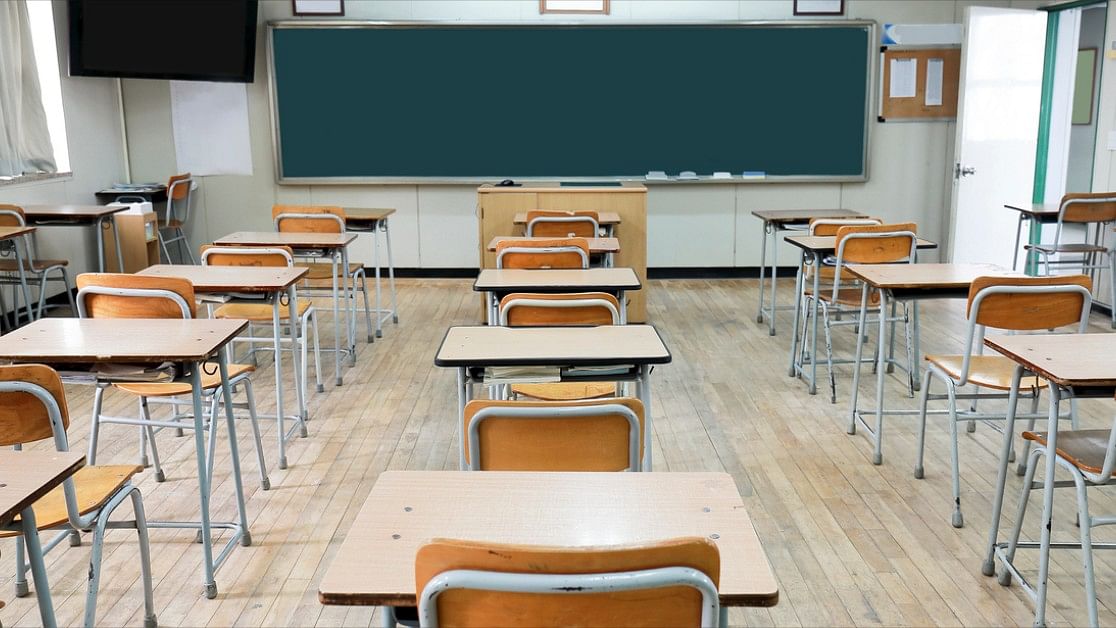
Representative image of classroom.
Credit: iStock Photo
The Rights of Persons with Disabilities Act (RPWD) of 2016 describes a child with disability as "a person with long-term physical, mental, intellectual, or sensory impairment that, in interaction with barriers, hinders his full and effective participation in society equally with others”. It also lists 21 disabilities, including specific learning disabilities, autism, blindness, low vision, and locomotor disabilities. Also, according to the RPWD (2016), “every child with a benchmark disability between the ages of six and eighteen years shall have the right to free education in a neighbourhood school or in a special school of his choice”.
Special schools are learning centres for children with special education needs (CWSN) or children with disabilities (CWD). In India, the choice of a special school is usually made by the parent, sometimes in consultation with the child, in contrast to the US or UK, where the choice is policy-driven. The educational policy of India makes it provisional for the parents to choose a school that best suits the child’s needs and abilities. Nevertheless, experience in this field reveals that children with mild to sometimes moderate disabilities are schooled in mainstream schools; it is only children with moderate to severe disabilities who go to special schools.
While the word “special” generally carries a positive connotation, special schools unfortunately have a stigma attached to them. According to research, 10 to 15 per cent of the school-going population has special educational needs (SEN). Besides CWSN, there are also gifted children, children who are average-functioning or below average, and children from different socio-economic backgrounds. Several factors affect the inclusion of these neurodiverse learners, including the number of children in a classroom, the training and attitude of the management and teachers, and the resources in the school and classroom. It is only when a child is not able to cope in a mainstream school or is denied admission due to his/her SEN and consequent challenges that parents consider special schools. Generally, special schools are not the first choice for parents of CWSN, hence the stigma. When children do not fit into a'mainstream' a.k.a. ‘normal’ school, they go to a 'special' school; thus, special is an antonym for normal! Indeed, the first question asked by parents when they approach special schools is: When will my child go to a "normal" school?
What is ‘special’ about special schools? A special school typically enrols children with a specific kind of disability or a cluster of related disabilities such as hearing impairment, vision impairment, learning difficulty, ADHD, autism, or intellectual disabilities. More often than not, special educators too are trained for a few disabilities. Teachers in special schools have a deeper understanding of the nature of the disability and the teaching pedagogy needed to teach children with disabilities. Additional features of special schools include systemic and environmental factors such as physical infrastructure, fewer children in a classroom, a better teacher-to-student ratio, and flexible class grouping of children that may not be based on their chronological age.
Counsellors and therapists are important people in most special schools too. For example, a child with severe learning difficulty may present a disparity in academic functioning levels of 4 years (a child in Class 6 may have academic and/or socio-emotional skills of Class 2 level), which makes it difficult for him/her to be with peers. In a special school, the teaching-learning process accommodates this difference and makes the content accessible to the child. A child with sensory impairment issues may have severe challenges with the physical environment in the mainstream; a special school would be able to modify and adapt the environment to suit the child’s needs.
These changes in the environment, curriculum, and teaching methods are ‘normal’ in a special school but are considered ‘additional’ in a mainstream school. A common understanding is that “children who are not normal go to special schools, and these children need 'something additional’ in the school environment”. Hence, special schools are special in aspects such as infrastructure, systems and processes, training, and the attitude of teachers. Children in a special school have special, additional, or diverse education needs. The label ‘special children’ is indeed misleading, but that is a debate for another day!
When mainstream schools become more inclusive in their approach, these additional elements needed by neurodiverse learners will start to be seen as necessary for most children; schools would then be able to include more CWSN. Ultimately, schools are a place for learning, and children should go to schools that allow maximum engagement with learning.
(The writer is the executive director of Brindavan Education Trust)